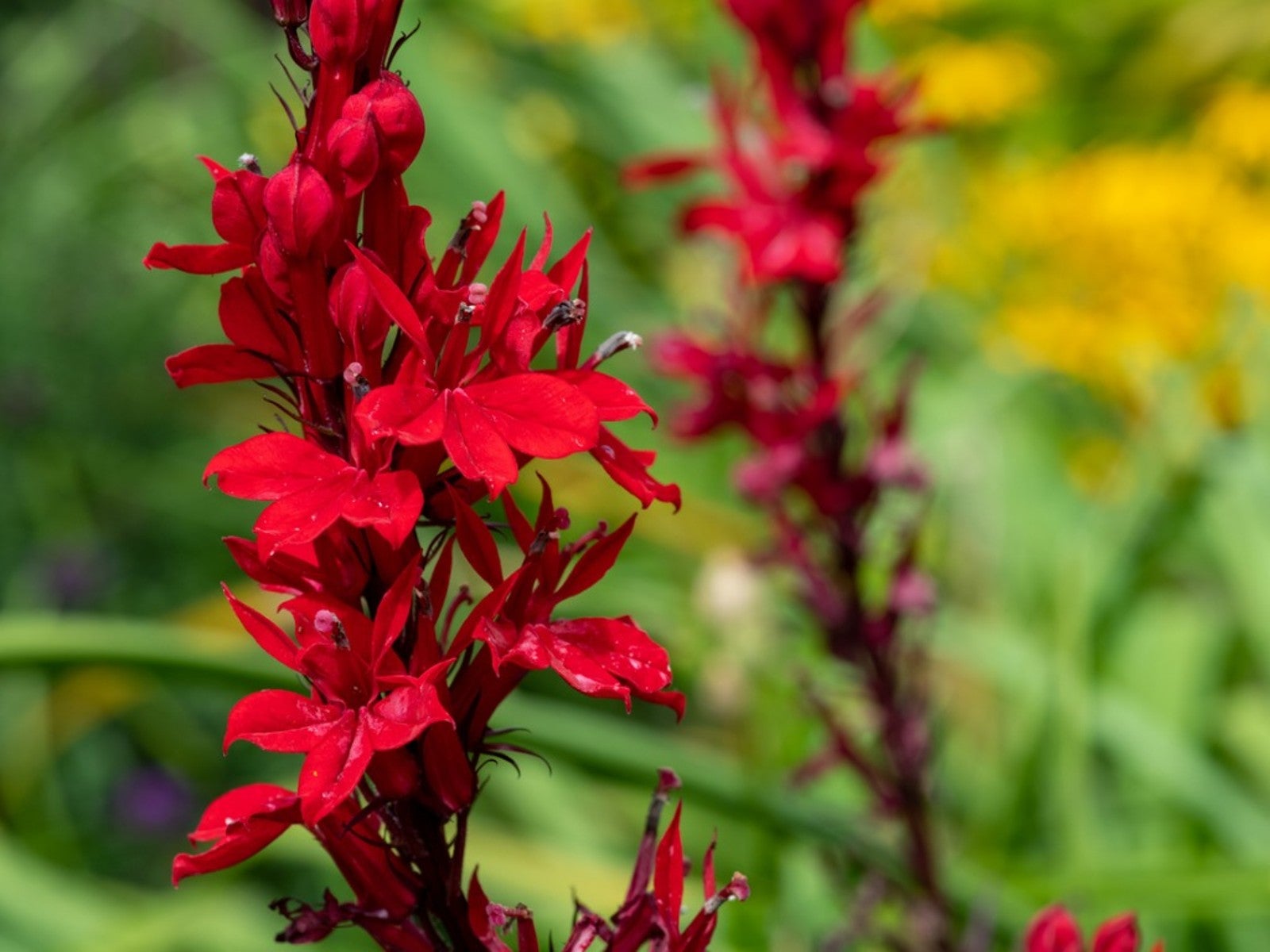Cardinal Flower Info - Growing And Caring For Cardinal Flowers


Named for the vivid red color of a Roman Catholic cardinal's robe, the cardinal flower (Lobelia cardinalis) produces intense red blossoms at a time when many other perennials are declining in the summer heat. This plant is an excellent choice for naturalizing and wildflower meadows, but you'll also enjoy growing cardinal flowers in perennial borders. So exactly what is a cardinal flower and how do you grow cardinal flowers in the garden? Keep reading to learn more about the cardinal wildflower plant.
What is a Cardinal Flower?
The cardinal wildflower plant is an American wildflower native to Illinois, Indiana, Iowa, Michigan, Missouri, Ohio, and Wisconsin. These Lobelia flowers are tall perennials that thrive in USDA plant hardiness zones 1 through 10. Tall spikes of brilliant red, trumpet-shaped flowers rise above the dark green foliage. Growing cardinal flowers bloom during summer and sometimes into fall.
Most insects struggle to navigate the long necks of the trumpet-shaped flowers, so cardinal flowers depend on hummingbirds for fertilization. The bright red color of the flowers and the sweet nectar attract many species of hummingbirds and growing cardinal flowers are ideal for use in hummingbird gardens.
The finely ground roots of this Native American wildflower were once traditionally used as aphrodisiacs and love potions, but the plant is toxic if eaten in large quantities. Therefore, it is better to stick only to growing and caring for cardinal flowers as opposed to using them medicinally.
How Do You Grow Cardinal Flowers?
Cardinal flowers grow best in a location with morning sun and afternoon shade, except in cool areas where they need full sun.
They need a moist, fertile soil and perform best if you work plenty of organic matter into the soil before planting. Set out new plants in spring, spacing them about a foot apart. Keep the soil very moist as the seedlings become established. A layer of organic mulch around the plants will help prevent water evaporation.
Caring for Cardinal Flowers
•Water your growing cardinal flowers deeply in the absence of rain.
Gardening tips, videos, info and more delivered right to your inbox!
Sign up for the Gardening Know How newsletter today and receive a free copy of our e-book "How to Grow Delicious Tomatoes".
•Fertilize the plants in fall with a shovelful of compost for each plant or a general purpose fertilizer.
•In USDA zones colder than zone 6, cover the plants in fall with a thick layer of pine mulch unless you expect heavy snow cover.
Cardinal flowers begin blooming in early summer and peak in mid- to late summer. Clip out the flower stems when they are done blooming, or leave them in place if you want the plants to self-sow. You'll have to pull back the mulch so the seeds can fall directly onto the soil if you want seedlings. If you cut the spent flower spikes just above the leafy part of the stem, new spikes may arise to take their place, but they will be somewhat shorter than the first spike.

Jackie Carroll has written over 500 articles for Gardening Know How on a wide range of topics.
-
 4 Superfast Composting Methods: Turn Waste Into Garden Gold In 30 Days Or Less
4 Superfast Composting Methods: Turn Waste Into Garden Gold In 30 Days Or LessTry the fastest composting methods to turbocharge your pile and transform kitchen scraps and garden waste into finished compost in just a few weeks.
By Mary Ellen Ellis
-
 Best Spider Plant Soil – Complete Soil Guide And Expert Tips For Keeping Plants Happy
Best Spider Plant Soil – Complete Soil Guide And Expert Tips For Keeping Plants HappySpider plants are fun and easy plants to grow, but what is the best soil for a spider plant? Selecting the right soil is important so they can thrive.
By Bonnie L. Grant